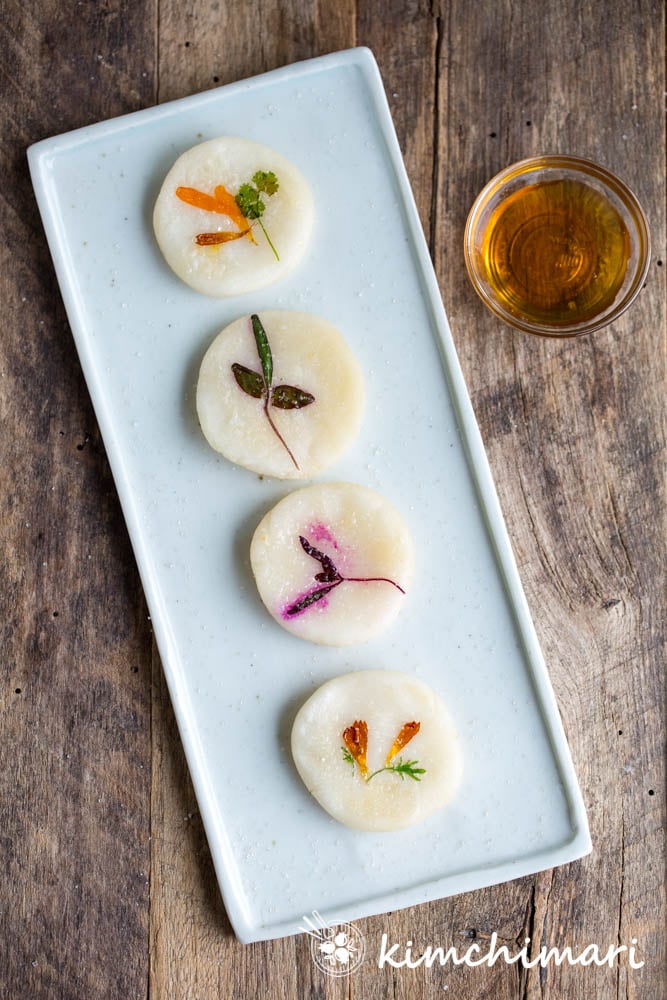
I was inspired to make this fresh flower sweet rice pancake or 화전 (Hwajeon) while I was preparing for my recent rice cake pastry class. Traditionally, Koreans make Hwajeon in spring with Korean azaleas (진달래꽃 jindalae kkot) or pear blossoms (배꽃 bae kkot). And then in the summer, rose petals and wild chrysanthemums in fall. Wild chrysanthemums are very small and not easy to find. So, in addition to wild chrysanthemums, I just gathered whatever edible flowers I could find. Korean mustard (갓 Gaat) flowers,
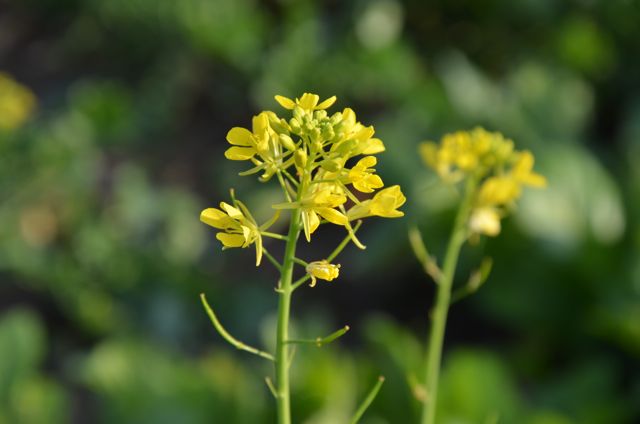
nasturtiums and even Italian parsely..all so beautiful and still edible.
The origins of these delicacies go all the way back to the Koryo Dynasty. In lunar calendar, March 3rd marks the start of spring and is called Samjitnal. The day is also referred to as the “when the swallows come back from the South”. Royal historians also recorded that on Samjitnal (삼짇날), the queen and princesses celebrated spring by playing games and also enjoying these pretty treats with the first flowers that bloom in the Spring.
In Korea, azaleas and pear blossoms appear first, even before you see any green leaves on trees. Below is a photo of Korean azalea plant I took last year while walking through our back hills.
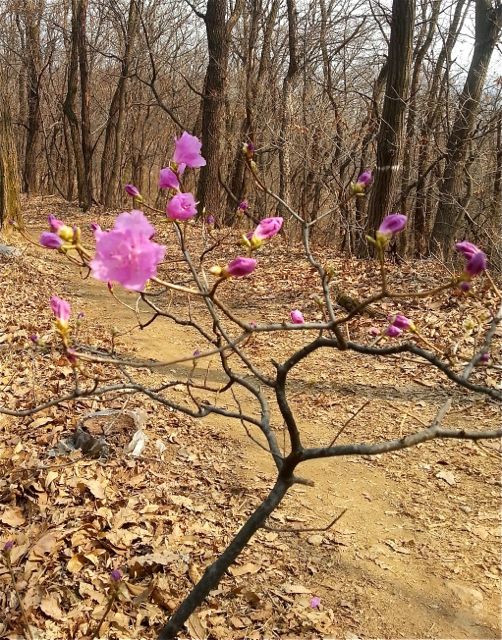
Notice how there are absolutely no green yet but the flowers have already bloomed!
The jindalae (Korean Azalea) flower also reminded me of the times when our family and relatives gathered at our grand parents grave every year in remembrance. We always visited in early Spring when these beautiful jindalae flowers were in full bloom. While the adults were preparing lunch, my cousin and I sneaked away into the hills to find these flowers. We picked them and sucked the sweet nectar from them. It was such a treat..I almost forgot about this story until today… Actually, there is even a Korean song – 진달래 먹고 물장구 치고 다람쥐 쫓던 어린시절..it basically says – my childhood days when we used to eat jindalae flowers, splash in the stream and chase after squirrels..Those childhood days were certainly fun and care-free!
The beautiful photo of pear blossom below is by Professor Choi Minho. He graciously allowed me the use of his photo. Thank you Professor Choi! I searched online for pear blossoms and this picture just jumped out at me. He has some great collection of Astronomy images and nature – http://minho.kasi.re.kr. A must visit, if you love beautiful images.
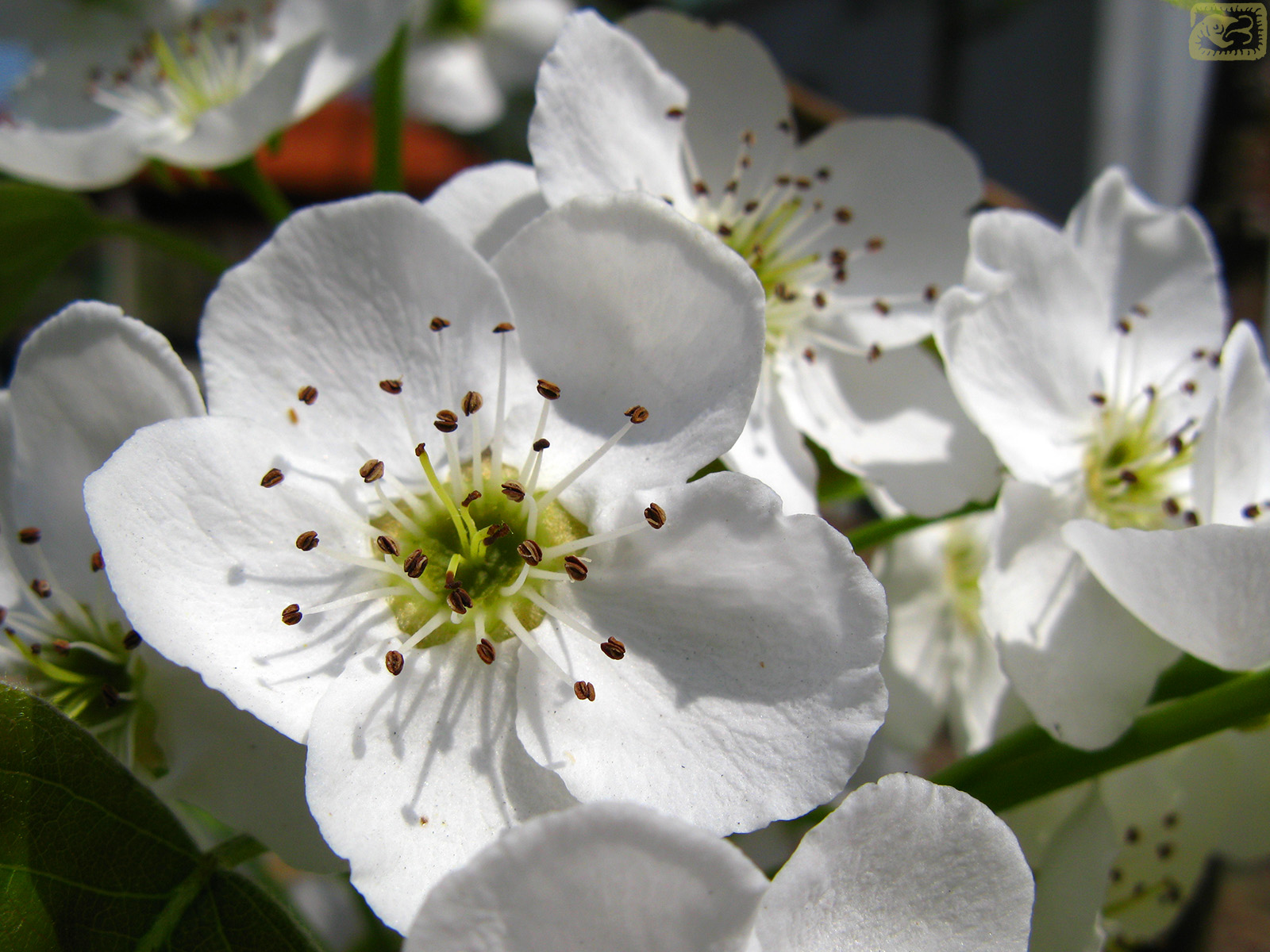
Making hwajeon is surprisingly easy and also yummy.. 🙂 and of course, absolutely beautiful. Below are some newly added photos of Hwajeon I made with flowers from my garden. Nasturtiums, Ssukat blossoms and lavender flowers.
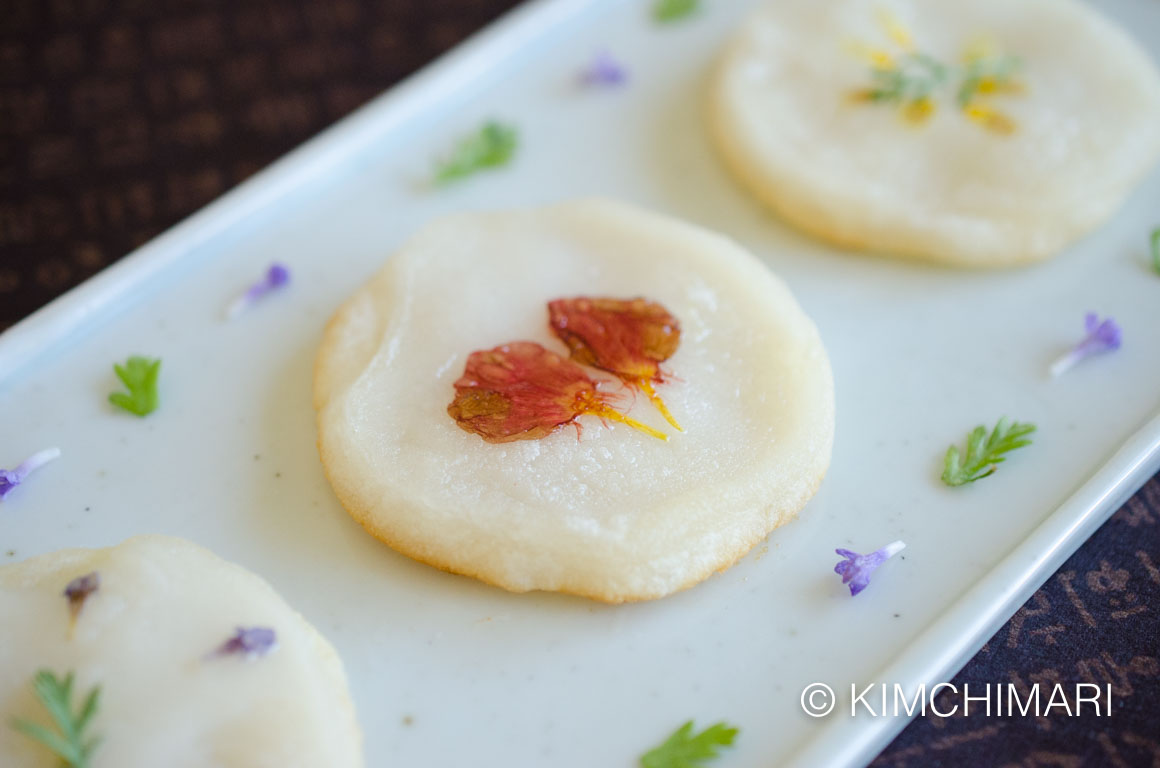
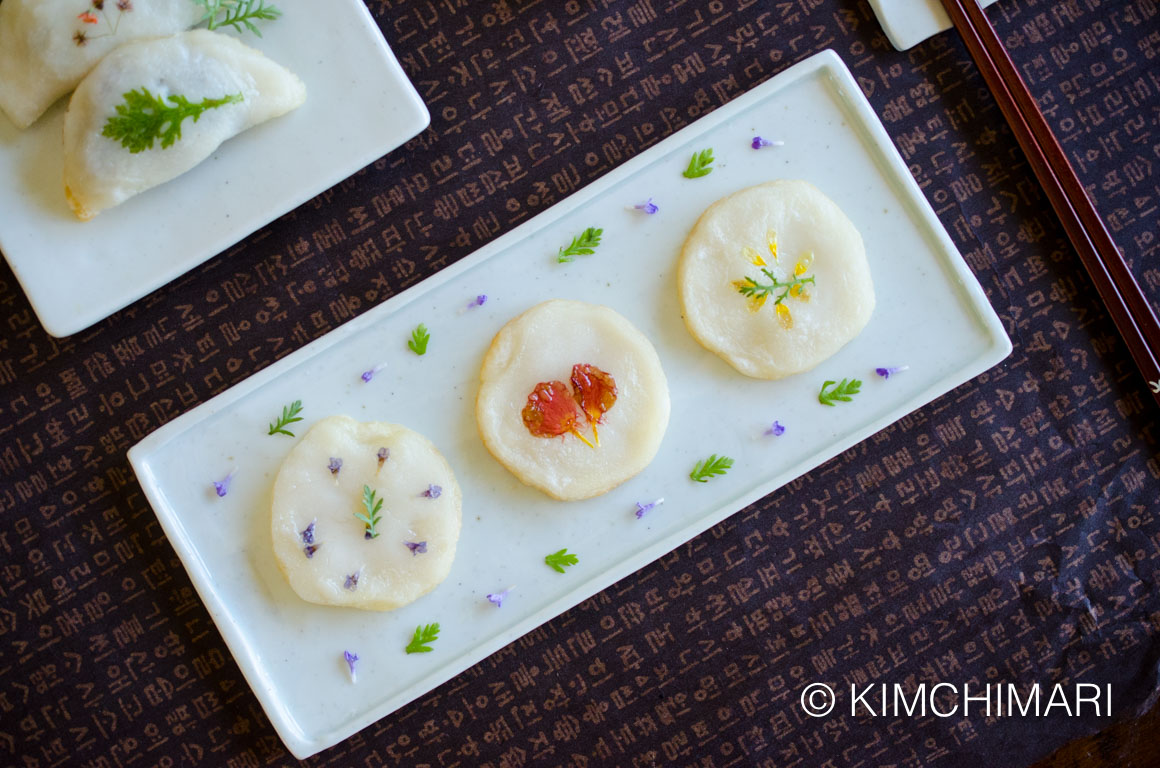
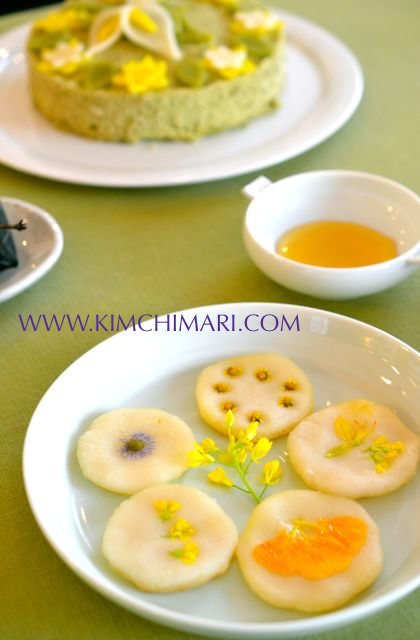
Ingredients
- 1 C /100g sweet rice flour (mochiko rice flour)
- 1/4 tsp fine salt
- 5~7 T hot water
- 2 T vegetable oil for frying
- bunch of your favorite edible flowers
Directions
- Mix rice flour and salt.
- Boil water. Let it cool for 10-20 seconds or so. Add this almost boiling hot water to flour mixture, 1 T at a time.*** BE CAREFUL not to burn your hands. Do not touch the wet flour directly but scoop the dry flour onto the wet area and gently toss and mix with your hands.
- When you have added 5 T of water, you should have a dough. Koreans call this kind of dough making Ickbanjook (익반죽). Ick means “cooked” and banjook means dough. Because hot water is used, the dough gets somewhat cooked while it is made. The temperature of the hot water is very important.
- Knead a few times to make sure dough is evenly mixed. Like so –
sweet rice flour dough for Korean hwajeon - If you see that there are still some dry, flaky areas, add 1 T of hot water. Mix.
- Divide dough and form 1 inch balls.
- Press each ball and shape into flat pancake shape – the size of a dollar pancake or about 2 to 2.5 inch wide.
- Press a flower or leaf onto each pancake. If your flower is too big, you can also take a few petals and use that instead. I used only 2-3 petals of nasturtiums here. The bottom greens are Italian parsely (didn’t have any other good greens).
uncooked korean flower pancake - Heat oil in pan and fry each flower pancake on med-high heat until the bottom side is lightly browned. Turn each pancake over just for 5 seconds until the flowers set in but not enough to brown the flowers. Alternatively, you can pour the oil over the pancakes to quickly sear them in.
Korean Hwajeon (fresh flower sweet rice pancake) cooking in pan Close up of cooked hwajeon – note the brown crusty sides - When the pancakes are cooked, remove them from the pan onto a plate and immediately sprinkle some sugar lightly on the pancakes. This adds a very light sweet flavor but also makes the pancakes to have a shine once the sugar melts.
- Optionally, brush each flower pancake with honey or sugar syrup. Serve with honey for dipping.
Cooked korean flower pancakes
TIPS
- USE HOT BOILING WATER – If the water is not hot enough, you will not have a very chewy and soft Hwajeon. The temperature is very important.
Fresh Flower Pancake (Hwajeon)
Ingredients
- 1 cup sweet rice flour (or mochiko rice flour)
- 1/4 tsp fine salt
- 6 Tbsp hot water
- 2 Tbsp vegetable oil for frying
- bunch of your favorite edible flowers
- honey (for dipping)
Instructions
- Boil water. Let it cool for 10-20 seconds or so. Add this almost boiling hot water to flour mixture, 1 Tbs at a time. Mix it well and form into a ball. *** BE CAREFUL not to burn your hands. Do not touch the wet flour directly but scoop the dry flour onto the wet area and gently toss and mix with your hands.
- When you have added 5~6 Tbsp of water, you should have a dough. Koreans call this kind of dough making Ickbanjook (익반죽). Ick means “cooked” and banjook means dough. Because hot water is used, the dough gets somewhat cooked while it is made.
- Knead for 1-2 min to make sure dough is evenly mixed.
- If you see that there are still some dry, flaky areas, add 1 T of hot water. Mix.
- Divide dough and form 1 inch balls.
- Press each ball and shape into flat pancake shape – the size of a dollar pancake or about 2 to 2.5 inch wide.
- Press a flower or leaf onto each pancake. If your flower is too big, you can also take a few petals and use that instead. I used only 2-3 petals of nasturtiums here. The bottom greens are Italian parsely (didn’t have any other good greens).
- Heat oil in pan and fry each flower pancake on med-high heat until the bottom side is lightly browned. To best keep the color of flowers, shower the flower side with hot oil to cook thoroughly. Alternatively, turn the hwajeon over 1-2 seconds to flash cook the side with flowers.
- Optionally, brush each flower pancake with honey or sugar syrup. Or serve with honey for dipping.
Nutrition Information:
This recipe produces a somewhat drier and crispier version of Hwajeon. If you like softer texture, you can add a bit more water.
My recent rice pastry class student was an art student from Germany and she was so happy to learn this recipe because she said she loves to pick wild flowers all the time.
Happy Fall! Enjoy~
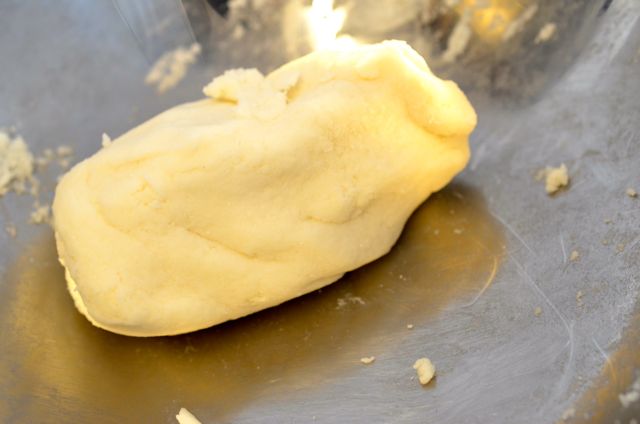
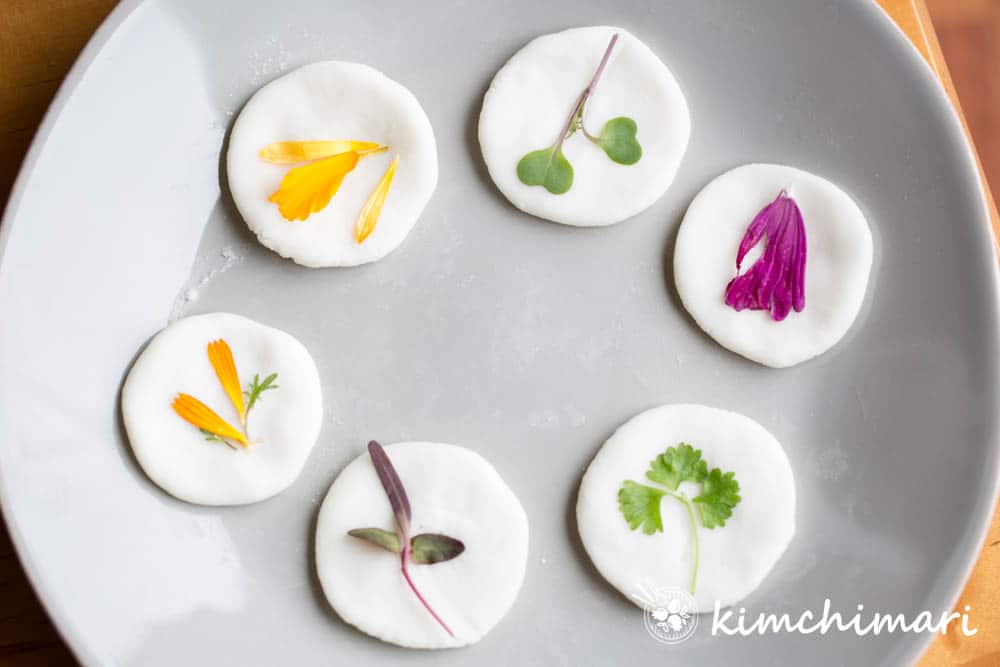
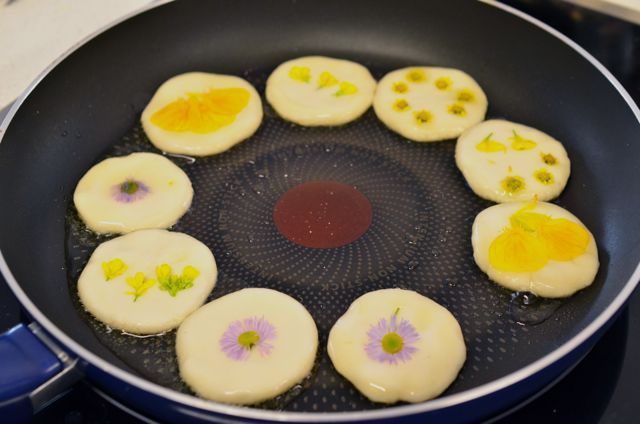
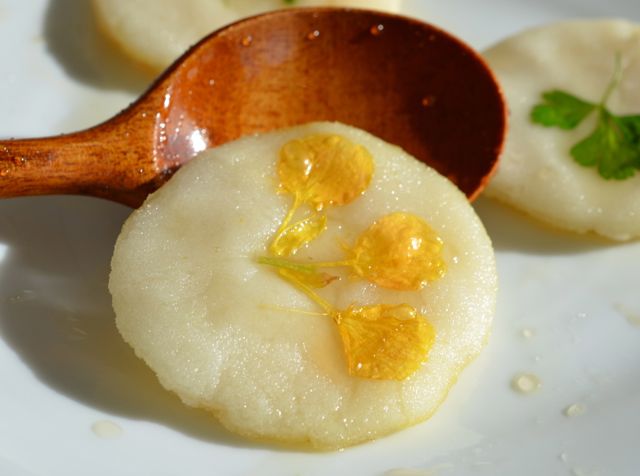
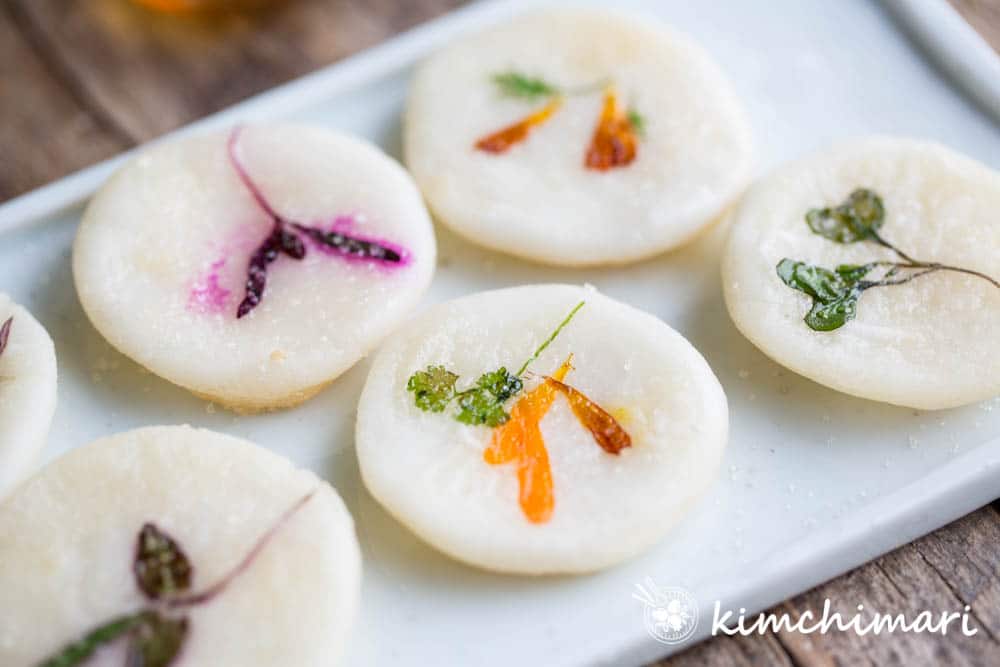
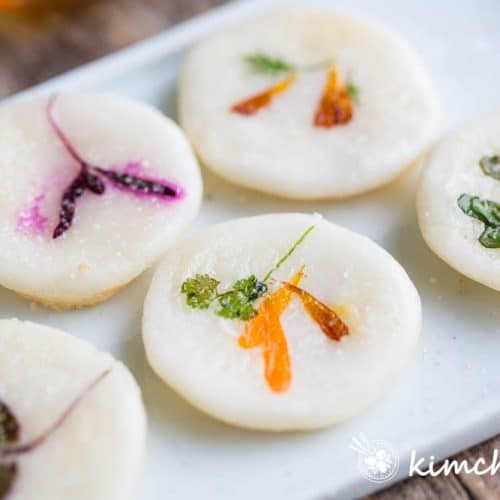
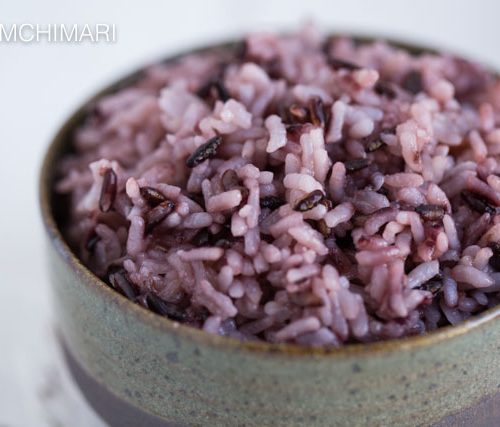
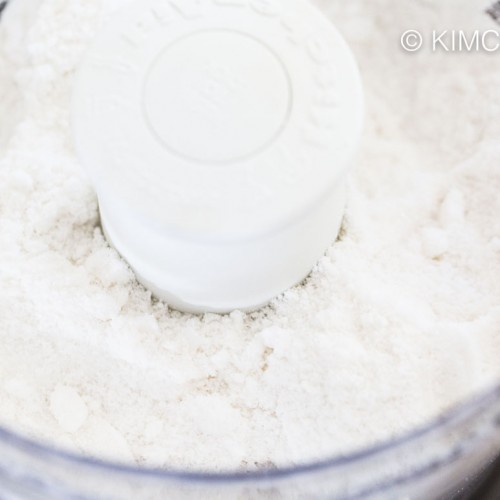
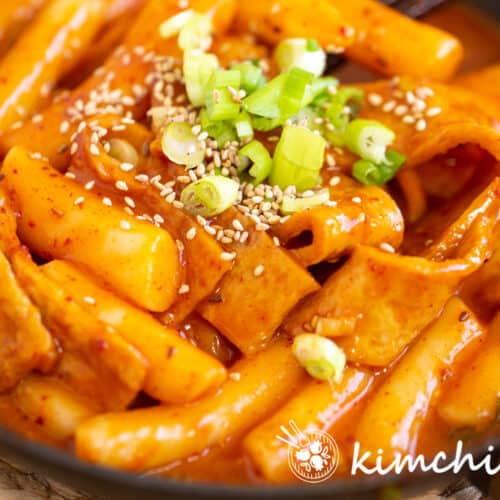
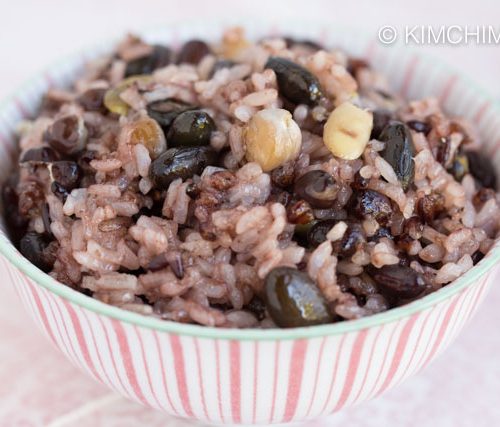
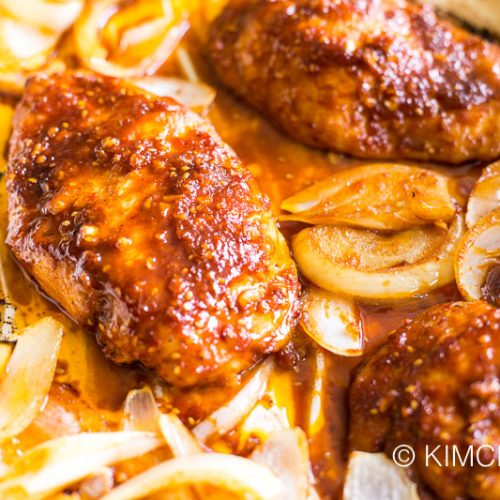
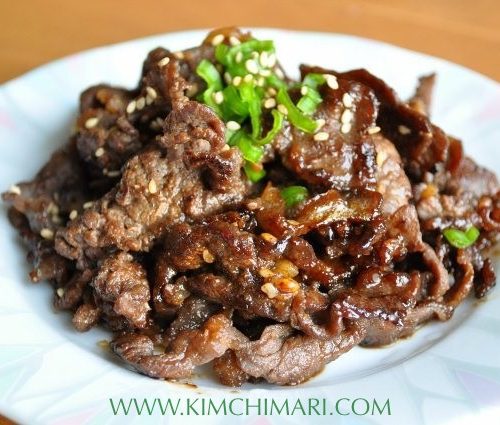
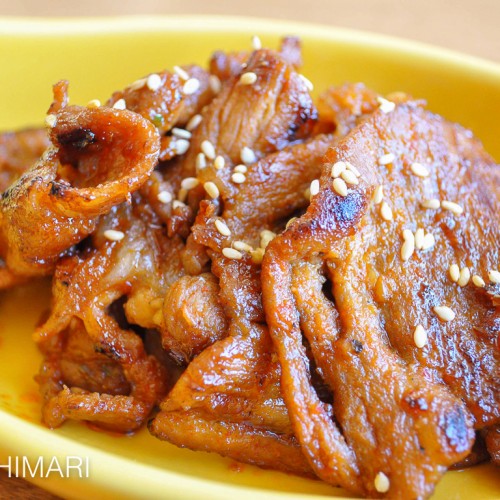
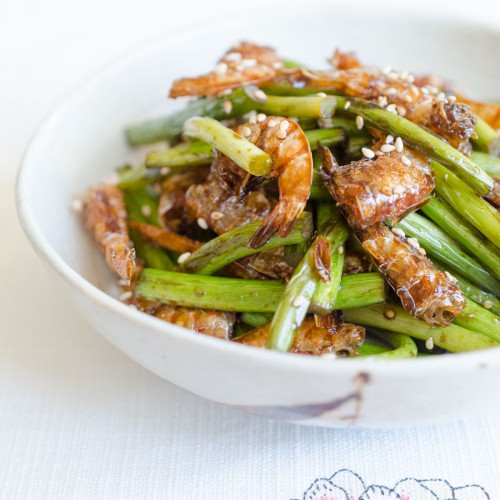
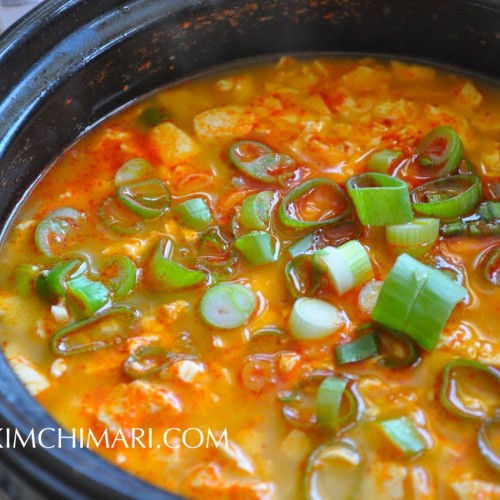
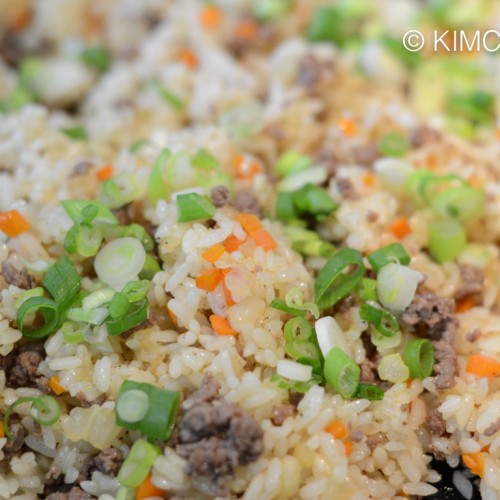
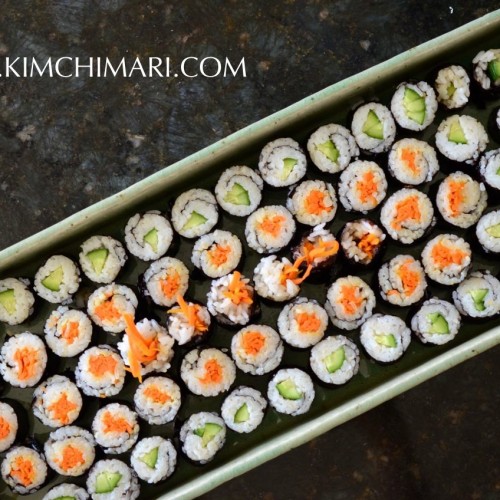
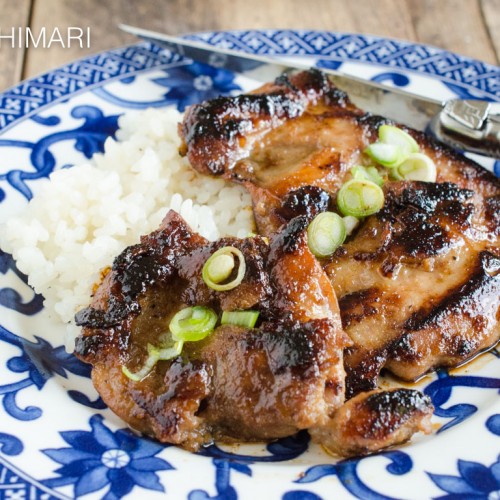
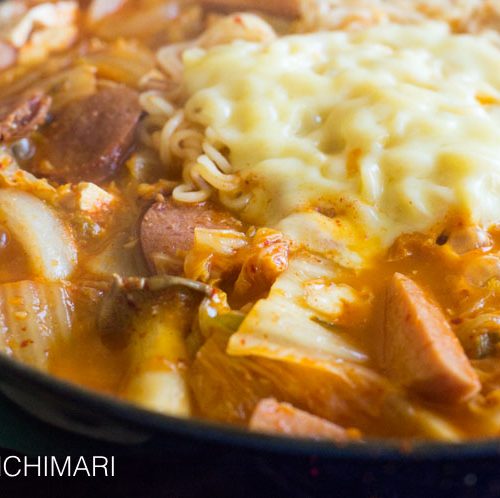
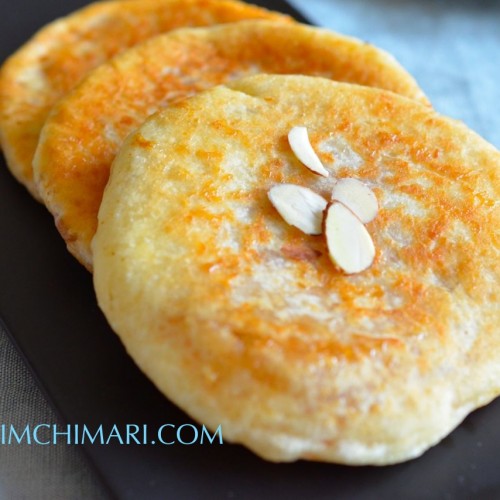






These are lovely! May I please ask how long will they keep for if made ahead of time?
Hmm.. these don’t keep very long. At room temperature probably about 1/2 a day? It’s not that they spoil but they get hard pretty fast. You can always reheat in the frying pan when that happens. Good luck!
These are beautiful, I will make some for my sweet Korean friend
Yay.. so happy to hear it! I’m sure your friend will appreciate it!!